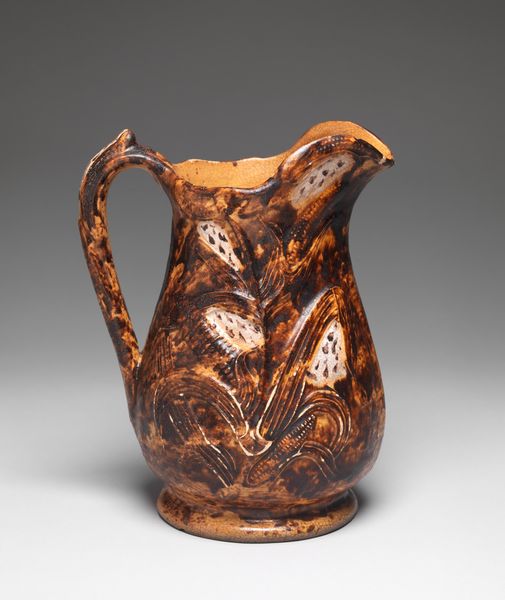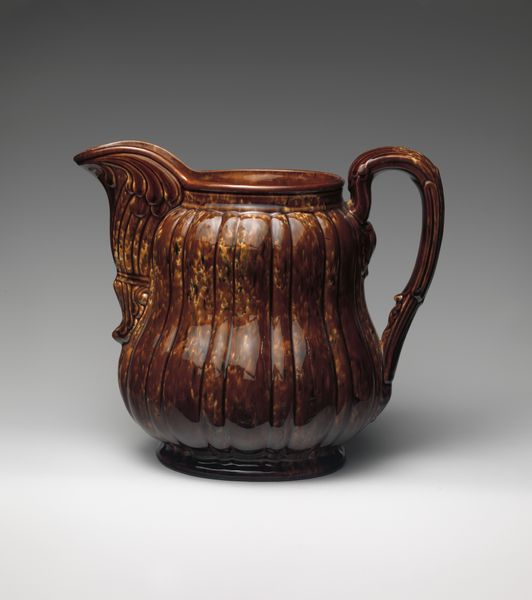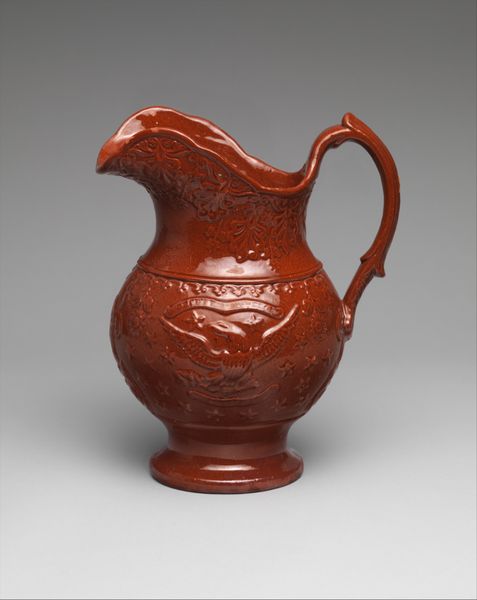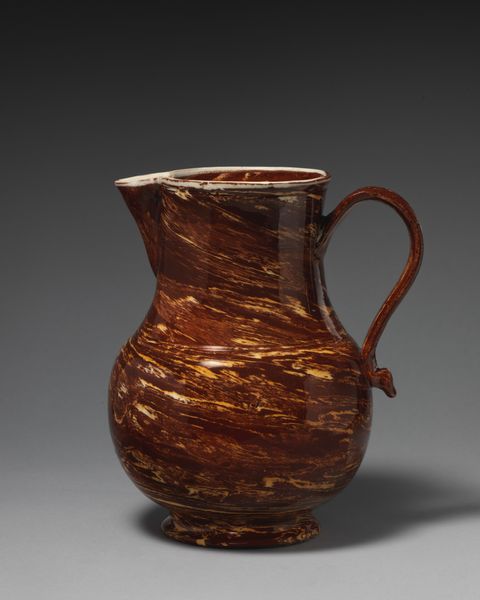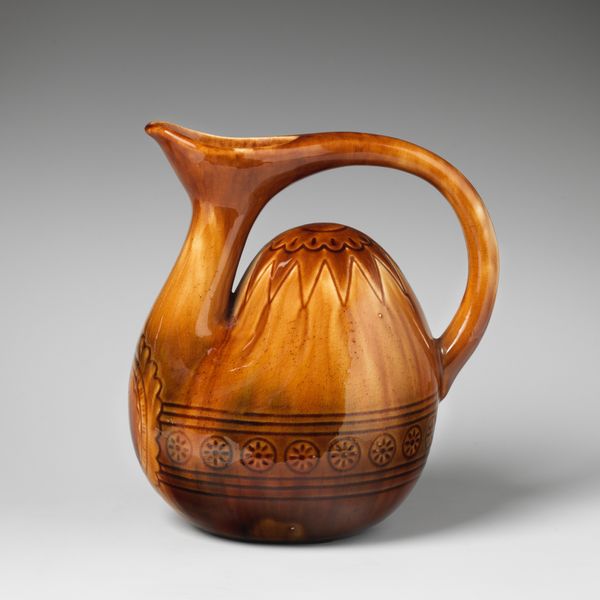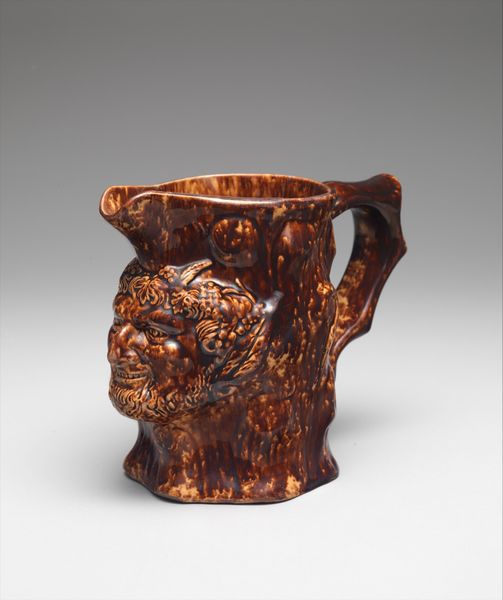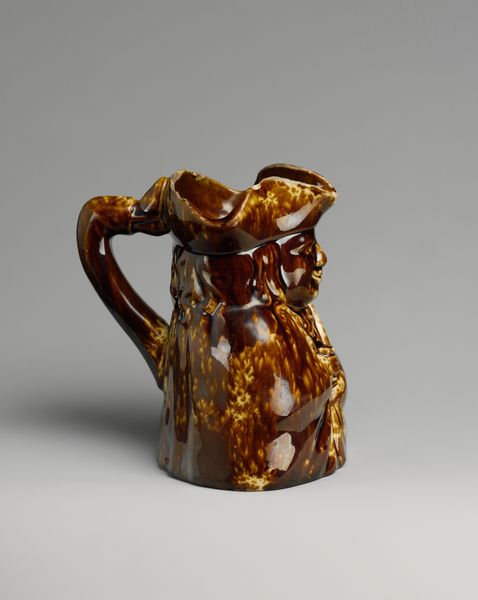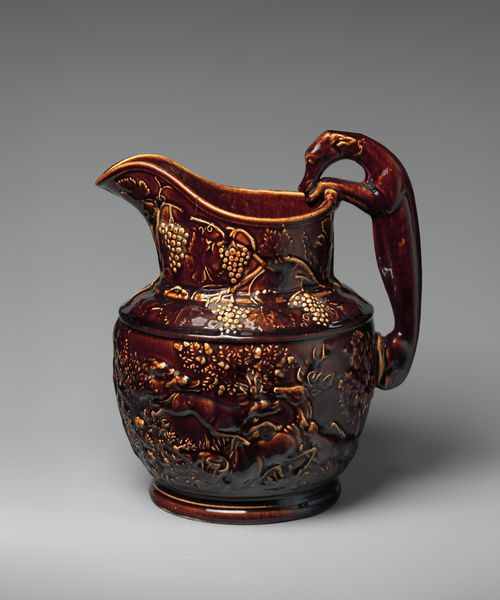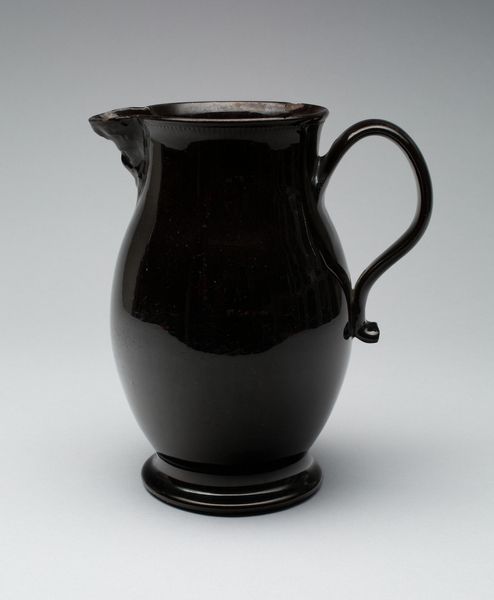
ceramic, earthenware, sculpture
#
ceramic
#
earthenware
#
stoneware
#
sculpture
#
ceramic
#
united-states
#
decorative-art
Dimensions: H. 7 5/8 in. (19.4 cm)
Copyright: Public Domain
Editor: We’re looking at a dark brown ceramic pitcher, made of earthenware, dating somewhere between 1846 and 1879 by a potter with the last name of Pyatt. The glaze looks thick, and it gives it a rustic, almost medieval, feel. I’m curious about how an everyday object like this reflects its time. What social forces might have been at play here? Curator: This pitcher invites us to consider the role of decorative arts in 19th-century America. While functional, pieces like this were also powerful statements about taste and aspirations. The dark, earthy tones were quite popular, but let's look at the raised relief. What scenes do you think are depicted? Editor: It's hard to make out specific figures, but it looks like people… perhaps in a forest or some kind of natural setting? Is that something the burgeoning middle class, maybe influenced by the Arts and Crafts movement, would like in their homes? Curator: Exactly! Think about the growing urban populations during that period. Nostalgia for rural life was strong. Owning a pitcher decorated with idealized natural imagery allowed individuals to feel connected to a simpler past. What do you think the availability and affordability of ceramics like these says about democratization of art in this time? Editor: So, owning such decorative piece signals a level of aspiration, making "high art" accessible beyond just paintings. Curator: Precisely. Pieces like these existed in dialogue with the high arts, blurring boundaries of social class through mass manufacture and distribution and bringing the aesthetics into the everyday lives. We might call it the instagram of its time, shaping our collective aspirations through display! Editor: That’s a great perspective! It makes me see how a simple object can hold complex cultural narratives about class, taste, and national identity. Thanks! Curator: Absolutely! Looking closely transforms what we perceive of history.
Comments
No comments
Be the first to comment and join the conversation on the ultimate creative platform.
